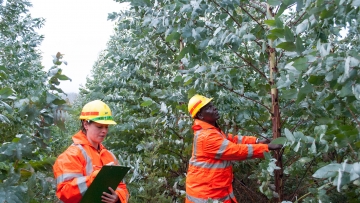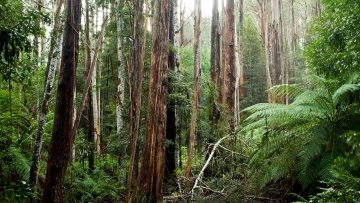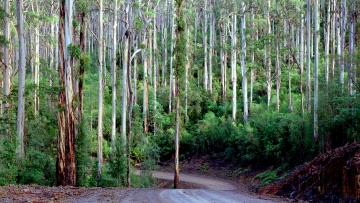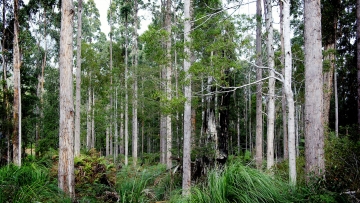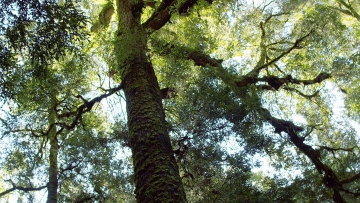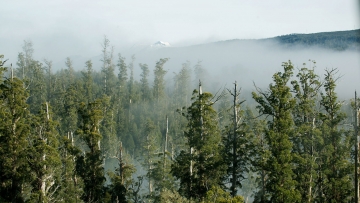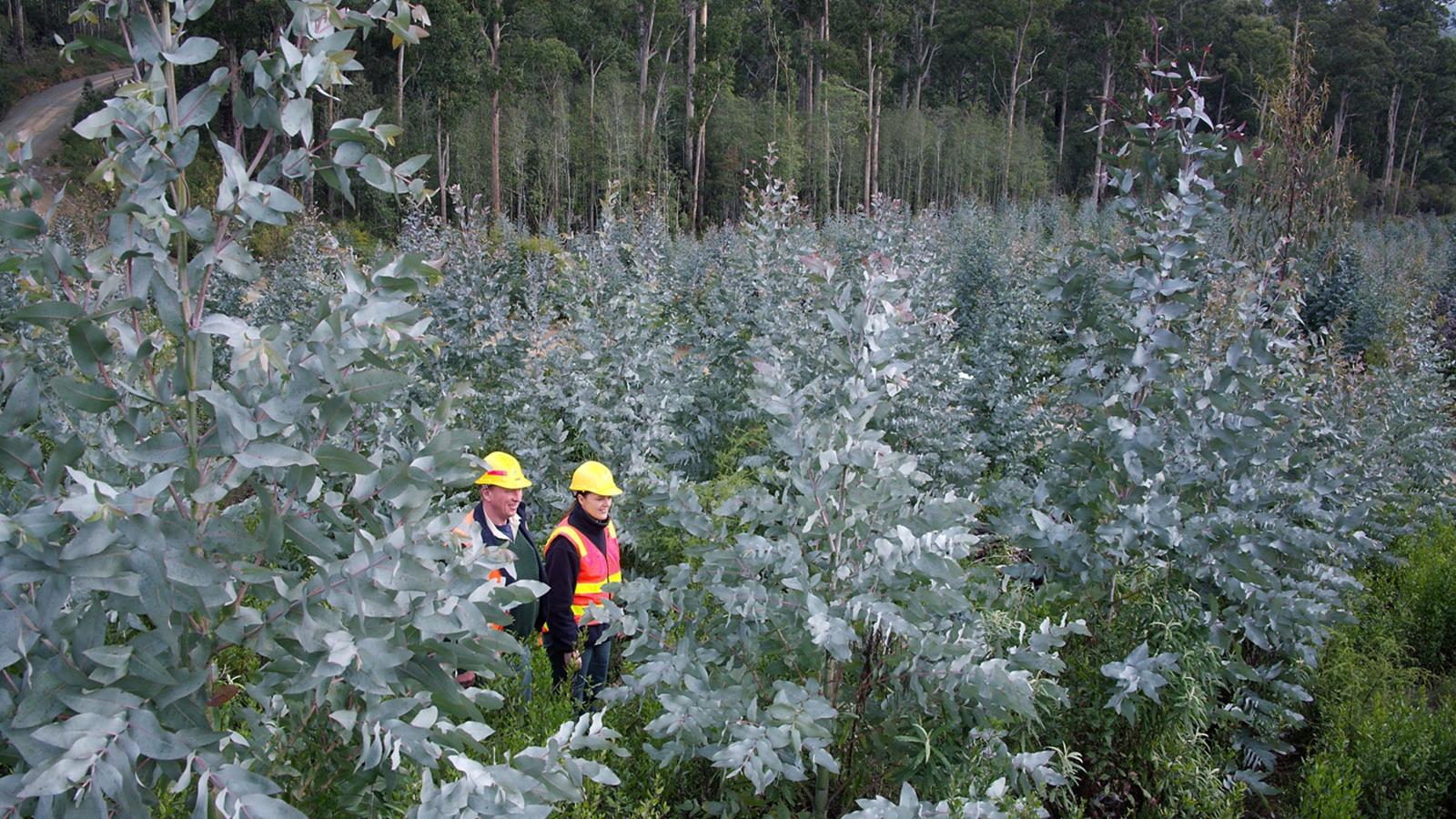
Eucalypt plantations
Increasing demand for plantation timber
Eucalypt plantation timber is likely to form an increasingly important part of Tasmania’s future forest product mix. Sustainable Timber Tasmania’s eucalypt plantation estate is managed to supply high-quality, high-value, pruned logs for the production of knot-free solid timber and veneer products.
These higher value products are primarily for local industry, but also for interstate and overseas markets. There are also increasing opportunities to develop engineered wood products from plantation logs.
Species selection
Sustainable Timber Tasmania grows two main eucalyptus species, Eucalyptus globulus (Tasmanian blue gum) and Eucalyptus nitens (shining gum). Both species have been selected for high growth rates and desirable wood properties. Approximately 80 per cent of the total hardwood estate is currently shining gum, as this species has better frost and disease resistance than Tasmanian bluegum.
However, Tasmanian bluegum timber has superior wood properties (density, strength and pulp yield) to shining gum making it more commercially attractive. As plantations mature and are harvested, plantings of Tasmanian bluegum may increase to around 50 per cent of the eucalypt plantation estate.
Tree improvement
Sustainable Timber Tasmania has a tree improvement program which aims to apply the best breeding techniques available to maximise the value of the plantation estate. These techniques include testing, identifying and breeding trees that have the right balance of growth rate and wood quality. Traits selected include branch quality, stem straightness, form, wood quality and disease resistance.
The program is based on more than 30 years of research, collaboration with other organisations, and an extensive network of provenance and progeny trials and seed orchards. We do not use genetic modification in our tree improvement and establishment program.
Growing high quality products
The production of high-quality sawlogs requires young trees to be pruned and thinned to provide the optimum growing conditions for the strongest, healthiest trees.
Pruning removes the branches on the lower stem promoting knot-free clearwood growth ideal for appearance-grade wood products - our highest quality product. Pruning is done by hand, when trees are between three and five years old.
Thinning is carried out to reduce competition between trees which helps to increase the size of the final crop trees. This is achieved by removing the unpruned, lower quality, slower growing trees and is usually undertaken with harvesting machines when trees are about 10 years of age. The trees that are removed produce logs suitable for pulpwood for paper production. The remaining trees are grown on until final harvest when they are between 25 - 30 years old.
Future supply
Most of Sustainable Timber Tasmania’s eucalypt plantations are still maturing.
Plantation sawlog timber is generally harvested between 25 to 30 years of age while pulpwood trees are harvested at around 15 years of age. By 2027, these plantations are forecast to produce about 77,000 cubic metres of high-quality pruned logs annually.

